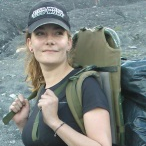Remote Sensing Application in Landslide Detection and Assessment
A special issue of Land (ISSN 2073-445X). This special issue belongs to the section "Land Innovations – Data and Machine Learning".
Deadline for manuscript submissions: 31 May 2024 | Viewed by 15943
Special Issue Editors
Interests: geomorphology; landslide; sediment transfers; hazard & risk assessment GIS; remote sensing; modeling
Special Issues, Collections and Topics in MDPI journals
2. PSBA Laboratory, Department of Geography, Adjunct at Universitas Gadjah Mada, Yogyakarta 55281, Daerah Istimewa Yogyakarta, Indonesia
Interests: geomorphology; mass movements (landslides and debris flows) hazards and disaster risk and sediment processes simulations
Special Issues, Collections and Topics in MDPI journals
Interests: geomorphology; slope instability; landslide mapping; climate-related geomorphological processes; hazard and vulnerability assessment; GIS
Special Issue Information
Dear Colleagues,
The launch of the Landsat 1 satellite in 1972 has propelled half a century of frantic technological improvement, with ever-increasing imageryresolution, and so from a growing array of sensors (multispectral imaging, radar…). In addition to this, airborne and ground-based sensors have boomed, providing calibration opportunities as well as unrivaled spatial and temporal resolution. As a result, remote sensing technology has had a pervasive impact on civil society and its activities, particularly to tackle environmental issues and disaster risk management. Notably, these benefits have been substantial for research and monitoring of phenomena like landslides and other mass movements, which are often difficult to access and hidden under thick vegetation cover. Indeed, remote sensing techniques are now widely used for the early detection of ground deformation, the implementation of warning systems in case of imminent landslide triggering, and the medium- and long-term slope instability monitoring supporting prospective modeling. This is particularly important considering that landslide occurrences may be exacerbated by extreme weather events, which are growing in frequency due to ongoing climate change.
The present issue is thus timely to share and discuss the state of the art and the remaining challenges in the field of landslide hazard and disaster risk remote sensing. For the present issue, we invite articles dealing with (1) applications of existing methods; (2) technological developments; (3) processing developments, including new algorithms. If potential authors wish to discuss any additional topics, please feel free to contact the special issue editorial team.
Dr. Candide Lissak
Prof. Dr. Christopher Gomez
Dr. Vittoria Vandelli
Guest Editors
Manuscript Submission Information
Manuscripts should be submitted online at www.mdpi.com by registering and logging in to this website. Once you are registered, click here to go to the submission form. Manuscripts can be submitted until the deadline. All submissions that pass pre-check are peer-reviewed. Accepted papers will be published continuously in the journal (as soon as accepted) and will be listed together on the special issue website. Research articles, review articles as well as short communications are invited. For planned papers, a title and short abstract (about 100 words) can be sent to the Editorial Office for announcement on this website.
Submitted manuscripts should not have been published previously, nor be under consideration for publication elsewhere (except conference proceedings papers). All manuscripts are thoroughly refereed through a single-blind peer-review process. A guide for authors and other relevant information for submission of manuscripts is available on the Instructions for Authors page. Land is an international peer-reviewed open access monthly journal published by MDPI.
Please visit the Instructions for Authors page before submitting a manuscript. The Article Processing Charge (APC) for publication in this open access journal is 2600 CHF (Swiss Francs). Submitted papers should be well formatted and use good English. Authors may use MDPI's English editing service prior to publication or during author revisions.
Keywords
- remote sensing for landslide monitoring and detection
- landslide hazard and susceptibility assessment by means of remote sensing techniques
- landslide mapping assisted by remotely sensed data (from spaceborne, UAV, ground-based sensors)
- early warning systems based on remote sensing technology (e.g., GB-SAR, InSAR, LiDAR)
- machine learning techniques for landslide hazard assessment
- development in processing remotely sensed data for landslide studies
- application of remotely sensed DEMs in the study of landslides
- GIS-based landslide susceptibility and hazard assessment with remotely sensed data







